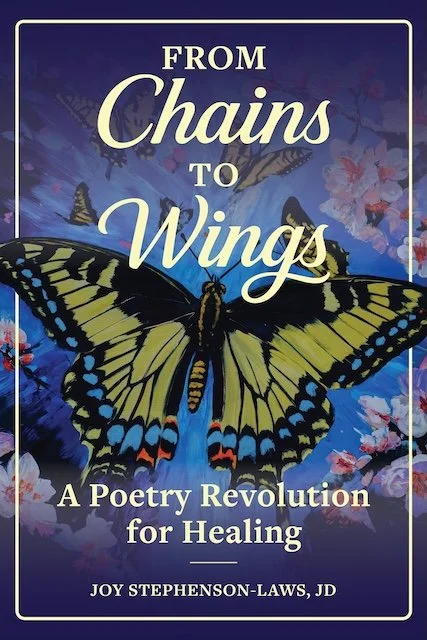Why Your Mouth Says “Yes” While Your Body Screams “No!”
By Joy Stephenson-Laws, Holistic Coach, J.D., Founder
A friend texts: “Can I borrow $500?”
Your fingers type “Of course!” before you can think.
But your jaw clenched the moment you saw the message. Your shoulders are at your ears. Your stomach dropped. Three hours later you’re lying awake, furious at yourself, already planning how to backtrack without looking like a terrible person.
You meant to say no. Your body voted no. So why did your mouth say yes?
Your Body Decides Before You Do
Here’s what most people don’t understand: your response to requests happens in your body before it reaches your brain.
When that text arrived, a part of your nervous system—faster than conscious thought—scanned for danger. Not physical danger, but social danger: rejection, conflict, abandonment, being seen as selfish. Within milliseconds, your body grabbed an emergency tool to keep you safe.
For many of us, that tool is the automatic “yes.”
This pattern probably formed years or decades ago, when saying no actually wasn’t safe. Maybe saying no to a parent meant withdrawn love or triggered rage. Maybe your culture taught you that good people always help, that your needs come second. Your nervous system learned: *automatic yes = stay connected.*
The problem? That tool is still running on autopilot—even when the original danger is gone.
The Three Emergency Tools
When someone makes a request, your body automatically reaches for one of three tools:
**The Doormat** – Automatic yes. Your mouth says “sure” while your body tightens. You abandon yourself to keep peace.
**The Dynamite** – Explosive no. Instant rage. You set boundaries like fortress walls designed to create maximum distance.
**The Disappearing Act** – Total blank. Can’t find yes or no. You literally leave your body.
These aren’t personality types—they’re survival protocols your nervous system learned. You might doormat with your mother, explode with your partner, and disappear when your boss makes demands.
The Space Where Choice Lives
Between any request and your response, there’s a space.
Psychologist Viktor Frankl wrote: “Between stimulus and response there is a space. In that space is our power to choose.”
That space is always there—but when patterns run automatically, it might be half a second long. So brief you don’t know it existed until “yes” is already out.
The practice isn’t eliminating automatic responses. It’s learning to notice them, which makes that space visible. Once you see the space, you can sometimes choose differently.
Try This Next Time Someone Asks for Something
Pause for two seconds. Just notice:
Where does your body respond first? (Shoulders? Jaw? Stomach?)
Which tool is it reaching for? (Yes? No? Blank?)
What’s the physical sensation?
Don’t judge. Don’t change it yet. Just notice.
You might still say yes automatically. But if you notice it happening—even three seconds after—you’ve found the space. That awareness is the beginning of choice.
What Changes with Awareness
When you notice your jaw clenching as you type “yes,” you have information: *My doormat tool grabbed control. My body is saying no. But my nervous system thinks saying no is dangerous.*
With that awareness, you might pause. You might write instead: “Let me check and get back to you in an hour.”
That one change—buying time instead of responding automatically—transforms everything.
The Real Cost of the Automatic Yes
Every automatic yes has a price:
You resent people who don’t deserve resentment. You’re exhausted from commitments you never wanted. You lie awake at 3 AM, furious at yourself. Your relationships are built on a version of you that doesn’t actually exist. And deep down, you wonder if anyone would love the real you—the one who sometimes says no.
The automatic yes isn’t keeping you safe anymore. It’s keeping you trapped.
What You Need Beyond Awareness
Noticing which tool you grab is the beginning. But there’s more:
How do you find that space when it feels impossibly fast? What do you do when you catch yourself mid-yes but can’t stop? How do you build boundary tools that don’t require doormat or explosion? Why does anger often guard something more tender—and what do you do with that?
Chapter 9 of From Chains to Wings walks through the complete framework: the interrupt techniques, the repair scripts for when patterns run anyway, and how to set proactive boundaries that bypass these automatic responses entirely. Because patterns that took decades to form don’t dissolve from one article.
You’ll probably say yes when you mean no again. Maybe tomorrow. But with awareness, that yes becomes a choice you notice yourself making—not something that happens to you.
That shift from unconscious to conscious changes everything.
Joy Stephenson-Laws, J.D., is a healthcare attorney with over 40 years of experience championing fairness in the healthcare system. She is the founder of Proactive Health Labs (pH Labs), a national non-profit that now embraces a holistic approach to well-being—body, mind, heart, and spirit. As a certified holistic wellness coach, she helps individuals and families create practical, lasting health strategies. Her own experiences as a mother inspired her to write resources that spark important conversations about safety and wellness.
She is the author of Minerals – The Forgotten Nutrient: Your Secret Weapon for Getting and Staying Healthy.Her children’s book, Secrets That Sparkle (and Secrets That Sting), empowers kids to recognize safe vs. unsafe secrets in a gentle, age-appropriate way.
Her latest book, From Chains to Wings, offers compassionate tools for resilience, healing, and emotional freedom.







